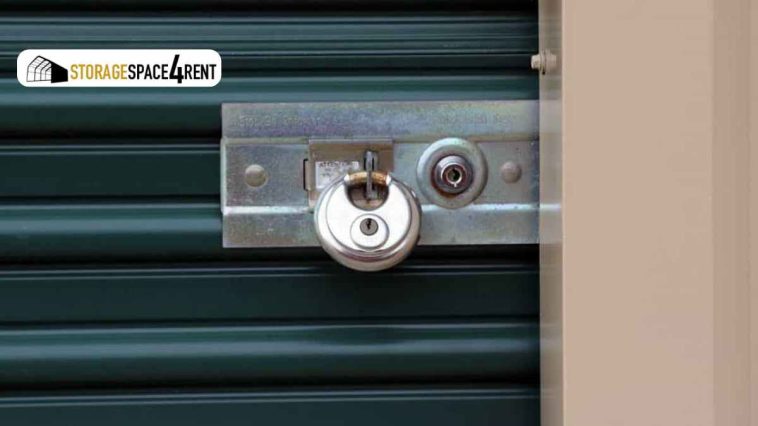The Canadian and American storage space industry, also known as the self-storage industry, has gained significant traction over the past few years. As a sector that leases storage spaces, such as rooms, lockers, containers, and outdoor areas, to tenants on a short-term basis, the self-storage industry has become a crucial service for both individuals and businesses. Its growth is fueled by various life events, often referred to as the “4Ds of life” – death, divorce, downsizing, and dislocation.
There are two sides to the storage space industry: (1) those looking for storage space for rent in USA and Canada and (2) those who own the storage businesses looking for customers. Regardless of which category you belong to, storage space directories like StorageSpace4Rent.com list storage spaces in every state and province. If you own a storage company, you can even list on their website for free.
In this guide, we offer a deep-dive into the storage space industry, exploring how it operates, its current trends, its possibilities for investment, and how to start a self-storage business.
The Storage Space Industry: An Overview
Description of the Self-Storage Industry
Self-storage facilities offer space rental services on a short-term basis, with options for longer-term leases. These facilities cater to individuals who typically store household goods and businesses that often deposit excess inventory or archived records. On top of space rental services, some facilities also sell boxes, locks, and packaging supplies, offering extra convenience to tenants. Some even provide truck rentals or free truck usage for new tenants, adding to their service offerings.
The storage units are secured by the tenant’s lock and key, with self-storage facility employees not having casual access to the unit’s contents. This means that the facility is generally not liable for theft. The facility only takes possession or control of the contents if a lien is imposed for non-payment of rent, or if the tenant fails to lock the unit.
History of the Self-Storage Industry
The modern concept of self-storage facilities, where tenants have exclusive access to their storage space, emerged in the late 1960s. The first self-storage facility chains opened in Texas, primarily because most homes in Texas lack basements, which are often used for storage.
The first self-storage business in Europe was initiated by Doug Hampson in the United Kingdom and opened in central London in 1979. Known as Abbey Self Storage, it became the first self-storage chain in Europe, earning Doug Hampson the enviable title of the “father of UK self-storage”.
The growth of modern storage facilities was slow until the ’90s when demand was greater than supply, leading to a surge of new self-storage developments. From 2000 to 2005, over 3,000 new facilities were constructed every year in America.
Current State of the Self-Storage Industry
The Self-Storage Industry Today
As of the end of 2019, there were 47,539 self-storage facilities in the United States, offering more than 1.9 billion square feet of available self-storage space. The global industry was worth 48.02 billion U.S. dollars in 2020.
In metropolitan areas where competition among storage companies is fierce, self-storage facilities are being converted from better parcels of land near residential and commercial areas. Companies have become more adept at manufacturing modular storage units, allowing operators to kick-start their operations quickly.
Self Storage Facilities: An Inside Look
Self-storage businesses lease a variety of unit sizes to residential and business customers. Unit sizes vary, and they include options such as:
- 5 ft × 5 ft (1.5 m × 1.5 m), a big closet in Canadian homes
- 5 ft × 10 ft (1.5 m × 3.0 m), resembling the size of a large walk-in closet
- 10 ft × 10 ft (3.0 m × 3.0 m), a small Canada or USA bedroom
- 10 ft × 15 ft (3.0 m × 4.6 m), about the size of a living room
- 10 ft × 20 ft (3.0 m × 6.1 m), comparable to the size of a one-car garage
- 15 ft × 20 ft (4.6 m × 6.1 m), similar to the size of a large master bedroom
- 20 ft × 20 ft (6.1 m × 6.1 m), nearly the size of a large two-car garage
These storage units are typically window-less, walled with concrete cinder blocks or corrugated metal, and lockable by the renter. Each unit is usually accessed by opening a roll-up metal door, which is usually about the same size as a one-car garage door.
Self-Storage Industry: A Snapshot
The annual revenue of the self-storage industry in the U.S. is $39.5 billion. The industry also spends $3.75 billion annually on construction. The average occupancy of a self-storage facility is 92%, while the number of facilities ranges between 45,547 and 60,024. Approximately 9.4% of households rent a self-storage unit, with the total rentable square footage being 1.709 billion sq. ft. The average storage unit price is $88.85 per month, with the average rental duration being 14 months. The profit margin for the industry is approximately 41%.
In 2021, the self-storage facility construction spend in the U.S. dropped to $3.75 billion from its 2018 peak of $4.89 billion. As the U.S. economy continues to grapple with the economic downturn caused by the COVID-19 pandemic, construction has slowed down despite the increasing demand for self-storage.
Starting a Self-Storage Business: A Step-by-Step Guide
Starting a self-storage business requires a comprehensive understanding of the industry, adequate planning, and efficient execution. Here are some steps to kick-start your self-storage venture.
1. Budgeting and Business Size Determination
Before launching your self-storage business, you should first establish a detailed budget and determine the potential size of your facility. This will depend on your financial capacity, the demand for self-storage in your target location, and the availability of suitable land or property.
2. Market Research and Target Audience Identification
Performing market research is crucial for understanding the storage needs of your potential customers. This will involve studying the demographics of your target audience within a one- to five-mile radius of the facility. The data gathered will help you tailor your services to meet your customer’s needs effectively.
3. Financing and Acquisition of Space and Equipment
Next, you need to secure financing for your business. This could be through personal savings, loans, or investor funding. Once you have adequate funds, you can proceed to purchase or rent space for your facility and acquire the necessary equipment.
4. Legal and Regulatory Compliance
Ensure that you complete all required legal documentation and form a legal entity for your business. You also need to obtain the necessary permits and insurance to operate as a business in your location.
5. Setting up Accounting and Banking Systems
Setting up proper accounting and banking systems is crucial for the smooth operation of your business. This will help you keep track of your financial transactions and facilitate easy reporting and auditing.
6. Advertising and Marketing
Once your business is set up, you need to start advertising to attract customers. This could involve online marketing, print advertising, or even physical signage at your facility.
7. Renovations and Preparations for Opening
Finally, if your facility requires any renovations or improvements, ensure these are done before you open your doors to the public. This will ensure that your facility is in the best condition to serve your customers.
In Conclusion
The storage space industry has proven to be a lucrative venture with great potential for growth. Starting a self-storage business can be a profitable endeavor with the right planning and execution. By understanding the industry, conducting thorough market research, and following the steps outlined in this guide, you can successfully launch and run a self-storage business.
Remember, the success of your self-storage business will depend on your ability to provide high-quality, reliable services that meet the needs of your customers. With dedication and hard work, you can create a thriving business in the storage space industry.




